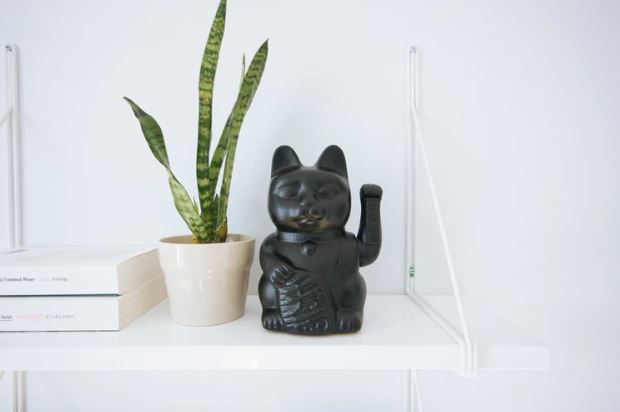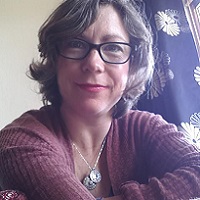View this post on Instagram
In the Western world, Feng Shui is widely misunderstood as a manifestation tool.
This is unsurprising given that it’s so often peddled as just that. And people have mixed results—for some it works like a charm and others have frustratingly poor outcomes.
The reason for this is that Feng Shui will be far more effective when we apply it as a personal development tool, rather than just a manifesting one. It can actually be a powerful manifesting tool, but most effectively so in the context of personal development than simply pursuing ego-based goals.
In the East, Feng Shui is regarded as a sacred spiritual practice and there are different schools with different guidelines. In India, there is a Vedic equivalent called Vastu Shastra. Both practices divide the home into zones that correlate with different areas of our lives, and both have guidelines around what items to place and where to place them around our homes to enhance results in different areas of our lives.
But here’s the thing—the area of your home that corresponds with that part of your life varies, not only between Feng Shui and Vastu Shastra, but also between classical and “Western” Feng Shui with one using the compass and the other version using the location of the front door as your Bagua guide. And there is also variation in the cures for problems presented by the architecture of the building.
So, if we simply decide to adopt one of these practices and follow their guidelines, without having any lifelong cultural investment in their power, then a lack of external results is highly probable.
To apply them effectively, we need to use them to help us excavate what and where our inner blocks might be. Whichever system we choose to apply, consciously dividing up our homes into zones that represent different aspects of our lives—health and wellbeing, wealth, personal development, and so on—can help us shine a light on where we’re energetically neglecting these parts of our lives.
It helps us to bring a mindful awareness to where we’re coasting, where we’re putting too much energy, and where we’re not putting enough. And we can use it as both an inside-out and an outside-in tool.
Inside-out:
Once you’ve applied the Feng Shui bagua to your home, go to the areas that correlate with the aspect of your life that you’re looking to improve. And then look for the clutter. Whether it’s just a drawer or the whole damn room, set a clear intention around what changes you want to make in this aspect of your life. Or maybe it can be an intention to receive clarity or to open up to guidance. With your intention set, start to declutter, clean, and organise.
Outside-in:
If you find that clutter tends to pile up in a particular spot in your home, check which part of your life that correlates to. And then ask yourself how things are going there. For example, if the spot correlates with romantic relationships, ask yourself if you’re happy with your current status. If in a relationship, is it good? Are there issues? If so, what are they and how can you (not the other person) effect positive change? Again, set an intention to receive clarity and insight into how you might improve the situation before you clear, clean, and organise this spot.
Despite the variations in specific guidelines between different schools, the fundamental shared philosophy is that our homes are containers for our energy. While our bodies are temples for our souls, our homes are temples for both. And to keep our physical, mental, and emotional energies as clear and free-flowing as possible, it’s vital to allow the energy in our homes to be able to circulate freely and easily, too.
This is why every Feng Shui consultant will advise you to start with decluttering. It’s important not to cram our homes to the rafters, but to fill them only with items that we need (use regularly) and that we love (gives us an energetic boost every time our eyes alight on them).
After that, they look at where and how items are placed throughout our homes and what they might potentially symbolise for the corresponding life aspect. For example, lots of images of women on their own won’t be helpful in attracting a partner if you’re a single woman. Instead, they’ll programme the subconscious to maintain the solo woman status quo.
For that reason, Feng Shui consultants always recommend images of happy couples to be placed in the relationships area of the home, and especially in our bedroom (which is always a relationship hotspot, regardless of where “Relationships” officially falls in our bagua).
It doesn’t matter so much which school of thought we’re following, as how mindful we are being about everything we’re placing around our home and what each thing means to us. We need to read the symbolism of what we’ve placed throughout our home and question whether it’s helpful to keep each item, or maybe consider moving it to another spot.
And we need to let go of the expectation that “feng shui-ing” our homes for romance or any other particular outcome will inevitably lead to the results we want. This is where the frustration and disappointment can arise for many. We can make all the perfect placements and put all the right cures in place, but if we haven’t got in touch with what the internal blockage is, then it’s not likely to lead to lasting results.
As within, so without.
And our homes can help us look in the mirror and see where we need to redirect our energy, and where we need to focus some self-care and healing attention. Which brings it back to being a spiritual or personal development practice. And as with many such tools and practices, when applied mindfully they can lead to surprisingly wonderful results in our lives.
Some might call that manifesting what you want. Others might call it allowing for your highest good to unfold. Whichever direction you want to go in, clearing out your home is always a wonderful starting point.
~















Read 3 comments and reply